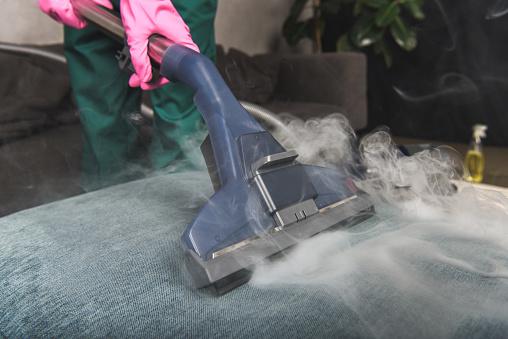Introduction:
Steam cleaning has become a popular method for deep cleaning various surfaces, thanks to its efficiency and eco-friendliness. A steam cleaner is a versatile appliance that uses the power of steam to sanitize and remove dirt, grime, and stains from a wide range of materials. Whether you want to clean your floors, carpets, upholstery, or kitchen appliances, a steam cleaner can be a valuable tool in your cleaning arsenal.
Benefits of Steam Cleaning
Steam cleaning offers several benefits that make it an attractive choice for both residential and commercial cleaning needs. Firstly, steam cleaners eliminate the need for harsh chemicals, making them safer for the environment and reducing the risk of exposure to harmful toxins. Additionally, steam cleaners can effectively kill bacteria, germs, and dust mites, providing a healthier and more hygienic living environment. Steam cleaning is also highly versatile, as it can be used on multiple surfaces, including sealed hardwood, tiles, grout, carpets, and fabrics.
How Steam Cleaners Work
Steam cleaners work by heating water to a high temperature, typically above 200 degrees Fahrenheit (93 degrees Celsius), to produce steam. The steam is then released through a nozzle or brush attachment, allowing it to penetrate and loosen dirt and grime. As the steam contacts the surface being cleaned, it dissolves and loosens the dirt, which can then be wiped away with a cloth or vacuumed up. The heat from the steam also helps to sanitize the surface by killing bacteria and other microorganisms.
Types of Steam Cleaners
There are various types of steam cleaners available on the market, each designed for specific cleaning tasks. The most common types include handheld steam cleaners, steam mops, and cylinder steam cleaners. Handheld steam cleaners are portable and ideal for spot cleaning smaller areas, such as bathroom tiles or kitchen countertops. Steam mops are lightweight and designed for cleaning larger floor areas, while cylinder steam cleaners are more powerful and versatile, suitable for tackling a wide range of cleaning jobs.
Choosing the Right Steam Cleaner for Your Needs
When selecting a steam cleaner, it’s essential to consider your specific cleaning requirements. Take into account the size of the areas you need to clean, the types of surfaces you’ll be cleaning, and the frequency of use. If you have mostly hard floors, a steam mop or cylinder steam cleaner may be the best choice. For smaller, more targeted tasks, a handheld steam cleaner can provide convenience. Additionally, check the steam cleaner’s water tank capacity, heat-up time, and the availability of attachments for different cleaning tasks.
Steam Cleaning Tips and Techniques
To maximize the effectiveness of steam cleaning, there are a few tips and techniques to keep in mind. First, always read the manufacturer’s instructions for your specific steam cleaner model. Before using the steam cleaner, ensure the surface you’re cleaning can withstand high heat and moisture. It’s also advisable to vacuum or sweep the area before steam cleaning to remove loose debris. When using the steam cleaner, move the nozzle or brush slowly across the surface to allow the steam to penetrate and lift the dirt effectively.
Steam Cleaning for Different Surfaces
Steam cleaners can be used on a wide range of surfaces, but it’s essential to understand the specific requirements for each material. For sealed hardwood floors, use a steam cleaner with adjustable steam settings and avoid excessive moisture that could damage the wood. When cleaning carpets and upholstery, use the appropriate attachments and ensure proper drying to prevent mold or mildew growth. For tile and grout cleaning, a steam cleaner with a brush attachment can effectively remove built-up dirt and stains.
Maintenance and Care of Steam Cleaners
Proper maintenance and care are crucial for ensuring the longevity and optimal performance of your steam cleaner. After each use, empty and clean the water tank to prevent mineral deposits from building up. Regularly check and clean the nozzles and attachments to remove any clogs or debris. If your steam cleaner has a filter, follow the manufacturer’s instructions for cleaning or replacing it. It’s also advisable to descale the steam cleaner periodically to remove mineral buildup and maintain its efficiency.
Steam Cleaners vs. Traditional Cleaning Methods
Compared to traditional cleaning methods, steam cleaning offers several advantages. Traditional methods often rely on chemicals, which can be harmful to both the environment and your health. Steam cleaning eliminates the need for these harsh chemicals, making it an eco-friendlier option. Additionally, steam cleaning can reach deep into porous surfaces and cracks, effectively removing dirt and bacteria that may be missed by traditional cleaning methods. Steam cleaning also reduces the amount of water used compared to methods like mopping, making it a more water-efficient option.
Conclusion
Steam cleaners have revolutionized the way we clean our homes and businesses. With their ability to harness the power of steam, these versatile appliances provide efficient, chemical-free cleaning for a variety of surfaces. Whether you’re tackling tough stains on floors, refreshing upholstery, or sanitizing kitchen appliances, a steam cleaner can be a valuable tool. By understanding the different types of steam cleaners available, choosing the right one for your needs, and following proper maintenance and cleaning techniques, you can make the most of this powerful cleaning method. Say goodbye to harsh chemicals and hello to the power of steam cleaning!
Read More: Buy scrubber machine uae
